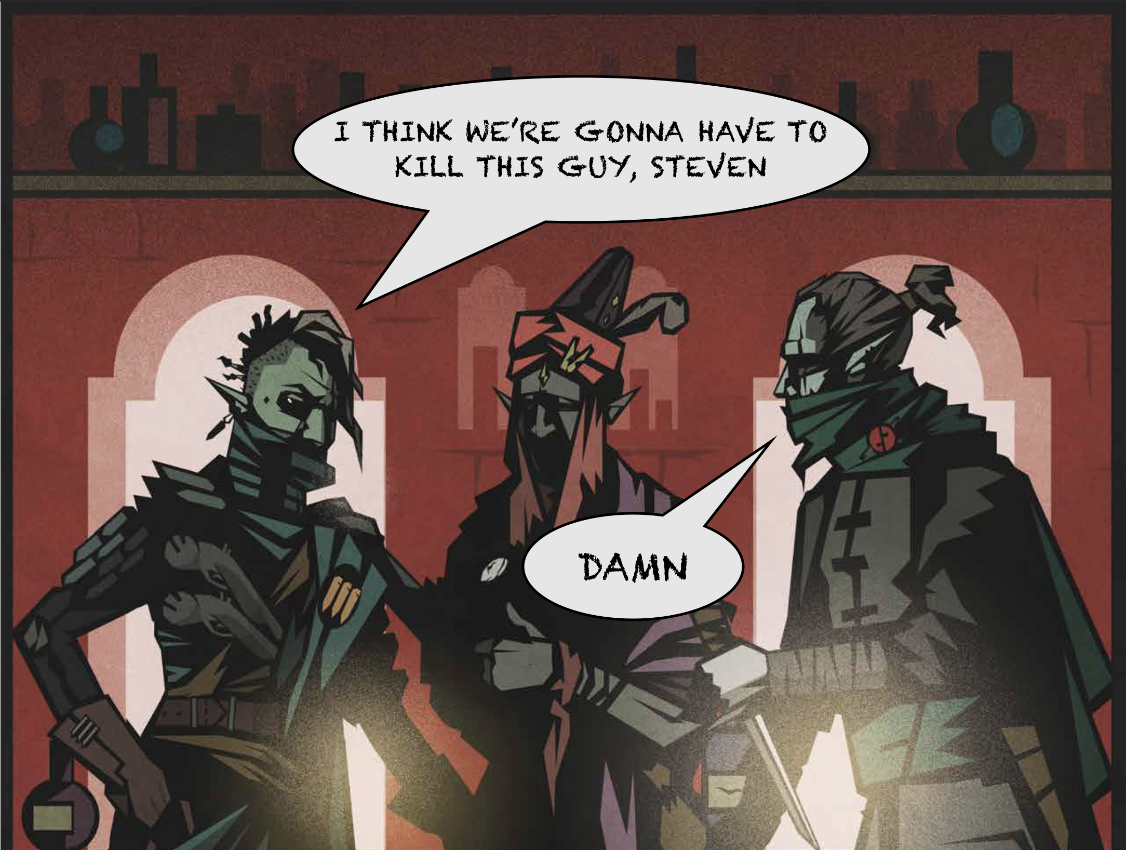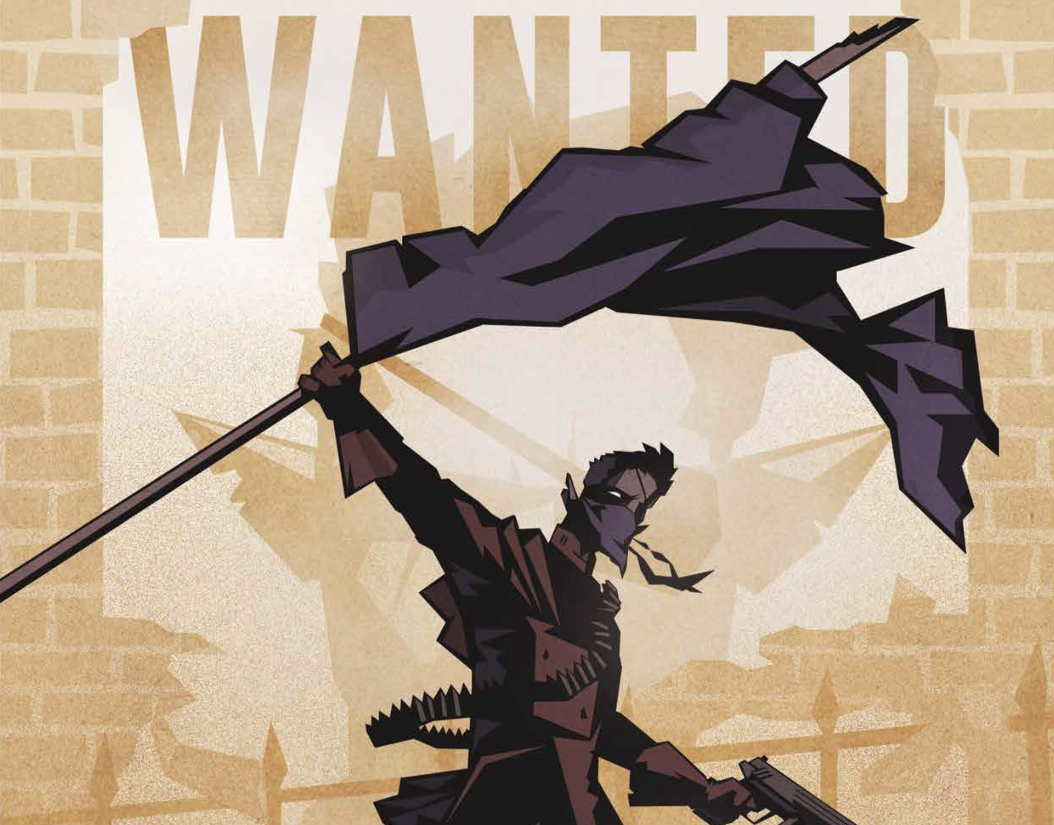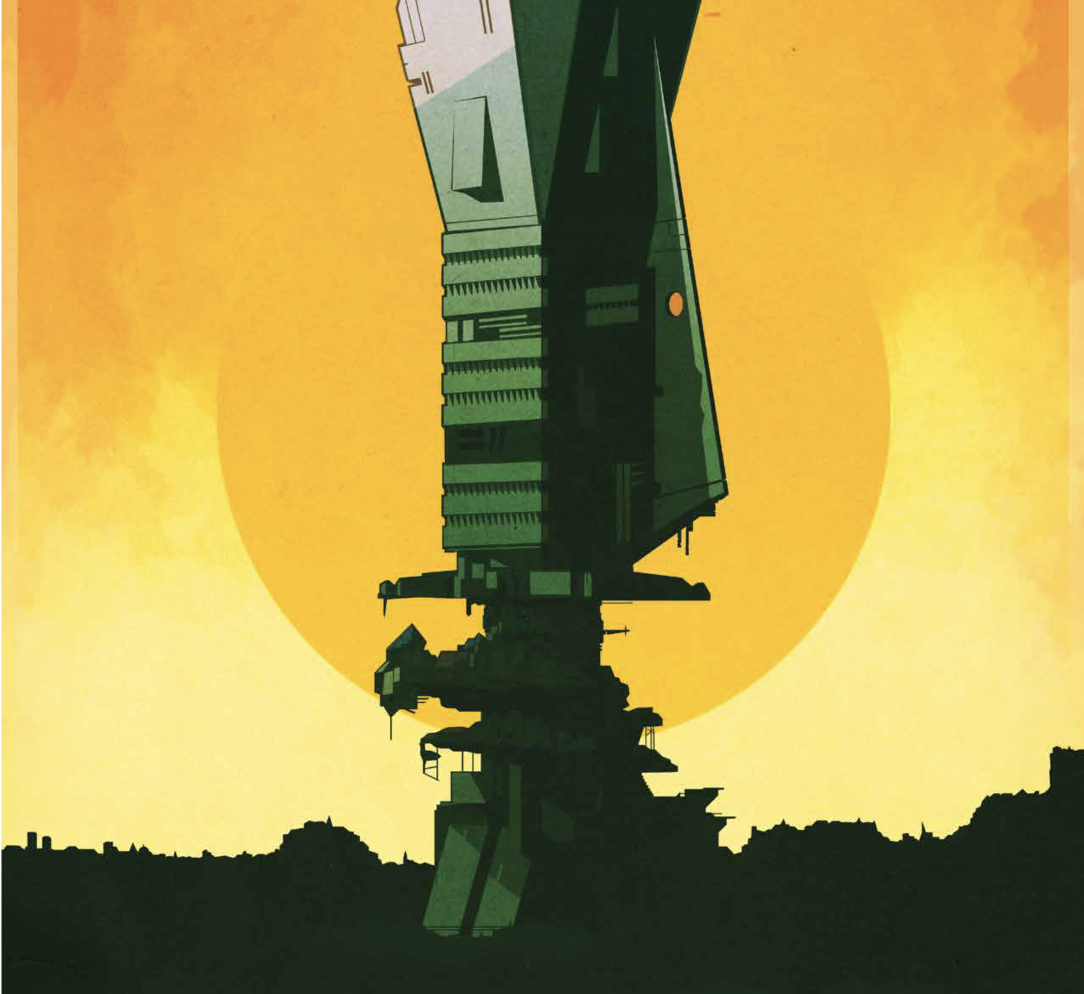
This is part 1 of a 2-part blog series on Spire and Heart (Rowan, Rook & Decard), and the ways that failure and consequences intertwine with the stories we tell at the table.
About three and a half years ago, I ran a short campaign of Spire: The City Must Fall, a moody, angry, fantasy TTRPG about upending popular tropes around dark elves (or Drow). Spire casts the Drow as a subjugated people, invaded and lorded over by deeply unsympathetic high elves (or Aelfir) and fighting desperately to fuel the flames of resistance. It’s a setting that’s grim, gross, and strange.
It’s a bit of a layer cake of tropes and subversions, beginning with humanizing the Drow by reconstructing them from ugly tropes by adding humanity, nuance, and community. Then, it introduces a colonizing force who levels those same cruelties and stereotypes against them. Finally, it casts the players exclusively as those Drow and tells them to fight back: against occupation, against subjugation, and against a cruel mischaracterization of what a people like themselves are and can be.
I do have a few qualms about how Spire approaches its subject matter, but I can’t deny the effort that designers Grant Howitt and Christopher Taylor put into delivering on their pitch. Character playbooks are strange and distinct from bland fantasy tropes, the megacity of Spire is loaded with fascinating places that are described with a light touch and pocked with holes for imaginative GMs to fill, and the book commits to a certain notion of revolutionary intrigue across its mechanical design, narrative framing, and GM advice. The game reminds you that the resistance is bigger than you, and that you can’t know the big picture lest your capture or failure jeopardize it. The game reminds you that everyone you fight is a thinking, speaking person with a reason to oppose you, but that those reasons probably involve maintaining Aelfir hegemony and you might just have to kill these guys. There are no mindless beasts, but that doesn’t mean there are no monsters. It’s hard-hitting and it means what it says.

But despite Spire’s strong pitch, I had some difficulty running it when I tried a few years ago. The gaps it leaves are great for imagining the details of its world, but provide no real scaffolding for staging stories of daring resistance within it. I turned to an adventure module (Eye of the Beholder, by Christine Beard) to assemble a space for the players to explore and some problems for them to solve. Along the way, though, I struggled to introduce meaningful challenges to a group of players who were reticent to do any check where they didn’t have multiple extra dice. They breezed through some obstacles, and when they were stifled by others, it often felt artificial, like I’d leaned too much on the scale against them. The way that Spire deploys its supplemental difficulty mechanic (which would help me increase the challenge) felt a little too arbitrary, a little too flat.
The system has a certain rhythm to it. On any given roll, players will either succeed or fail based on the best result in a pool of D10s. A result of 6 or greater is a success, and it’s fairly common to approach a task with 2 or more dice in hand (that’s at least a 75% chance to succeed). Results below 8 accrue Stress, which can land on several different tracks and remains there until healed circumstantially or ultimately detonated by Fallout: every time Stress is added, a die is rolled to check if Fallout occurs. Stress is abstract, Fallout is concrete. When fallout does finally occur, it incurs both narrative an mechanical penalties that can reduce the PCs’ effectiveness or invite additional trouble. Players work their way through problems, picking up bits of Stress largely inconsequentially at first, until things begin to come undone and Fallout rears its head.
It’s a system designed for tension, where greater consequences are meant to loom before they land. I knew that it was designed to work this way, but I wasn’t quite prepared to push through my players’ cautious play, and I rarely enticed them to engage proactively unless they could maneuver into additional dice. Throw in some remarkable luck (very few failures and very little stress accrued) and we ended up with a 5-session campaign where fallout kicked in maybe once or twice ever. The adventure was dark and exciting, but the friction felt insufficient to make the story really sing and carry the weight it wanted to.

I put Spire back on the shelf with a feeling of mild disappointment, hoping to revisit it someday but making no concrete plans (I still haven’t run it again yet). In my mind, it was a decent little campaign, but an overall flop in GMing on my part, a failure to deliver on the stakes as written. I didn’t collect player feedback for this adventure; my regular group of old college friends are more keen to play something and hang out than they are to dive deep into reflection and metacognition about everything we play; for some of them, giving feedback is a chore at best (which is entirely understandable).
While writing this post, I asked them what they recalled about this game; nobody seemed to remember how much friction or consequence they encountered. What they remembered, generally, was the bizarre abilities and the more vivid details about the setting and the scenario.
The fun for them, as far as I can tell, existed outside of the challenge or consequences. It was instead about exploring the setting and seeing the adventure through, occasionally using cool abilities along the way. This is probably incredibly obvious to most people, but I was prepared to show them what they were really up against, to give them difficult choices and real danger. I had conceived of these characters as desperate revolutionaries taking enormous risks to stop an injustice, not smooth operators on a clear-cut rescue mission.
Spire is ultimately quite vague about the what goals players might attempt to accomplish, and its advice about campaign structure is very high level. The presumption is that PCs will be gathering resources and allies for the resistance, disrupting injustices where possible, and uprooting seeds of corruption. More dour or tactical goals like taking down a turncoat or installing a sympathetic councilman still have a vaguely heroic bent, given the context. What I hadn’t accounted for was that even if Spire thematically positions itself as dire and grim, its overarching inclination is towards hope and justice, unattainable as they may seem.

See, in Spire, character advancement happens whenever the PCs change the world in some way, small or large: to me that reads as fundamentally hopeful (even if the game makes it clear that the change need not be positive for it to count). Some playbooks even have a bit of superhero feel to them. At my table, Spire wound up being a game about heroic triumph, not heroic sacrifice, and it felt like it undermined its own themes a bit. But it worked fine for the players, who were satisfied to do some good in a setting that they understood to be brutal and unjust.
In other words, Spire is simply not an engine that requires negative consequences to produce an outcome that felt natural to my players, at least not when it left room for unambiguously heroic acts (as was the case in the scenario we played through). What was lacking to me didn’t register as an issue to players, especially not this particular group who likes to progress and succeed. It’s probably worth admitting that, as a GM, part of my enjoyment comes from challenging players with complications and consequences.
I still have a real fondness for what Spire achieves in its world-building and writing. But I believe that Spire’s followup, Heart: The City Beneath, does thrive on failure in a number of ways. More on that next week.